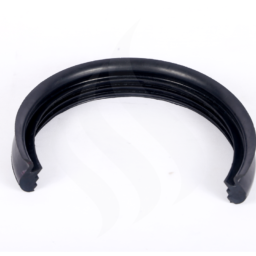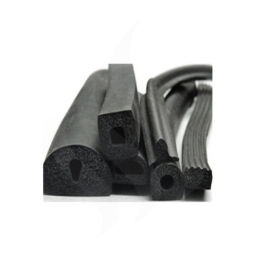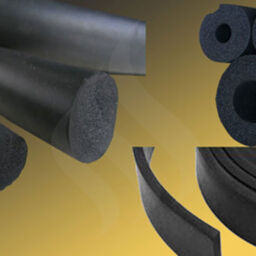Have you ever faced a situation where the rubber compound you’ve been using meets all requirements, only for the end customer to request a higher hardness compound using the same polymer hardness? While it may seem like a straightforward adjustment, there are critical considerations to take into account. In this informative blog, we’ll delve into the steps and factors involved in modifying a rubber compound to achieve a higher hardness, both from practical and technical perspectives.
Understanding the Context:
The initial step in this process involves comprehending the intended use of the product and the specific manufacturing process. The choice of modifications depends on these fundamental factors.
Some of the key applications of rubber profiles in railways are:
- Raw Rubber System: Modifying the raw rubber system is a common approach to adjusting the hardness of a rubber compound. Rubber-plastic blends, especially those with high styrene or PVC/NBR alloys, can induce a hardening effect. Additionally, altering the type and grade of plastic used can impact hardness.
- Vulcanization Promotion System:
- Increased Curing Agent: Enhancing the cross-chain density of rubber can be achieved by altering the amount of curing agents.
- Resin Addition: Achieving the desired hardness may sometimes necessitate the addition of new ingredients to the rubber compound. Introducing ingredients like phenolic resin and HSR resin can modify the compound’s properties, contributing to desired characteristics such as hardness.
- Secondary Vulcanization: Certain secondary vulcanization processes can be employed to intensify cross-linking in the rubber, ultimately enhancing hardness.
- Adjusting Fillers and Plasticizers: One widely used method to alter the hardness of a rubber compound is by modifying the levels of fillers and plasticizers. These components play a crucial role in determining the hardness and other physical properties of the rubber. However, certain care must be taken, as each rubber type has limits regarding the amount of fillers it can accommodate. Exceeding these limits can lead to processing and manufacturing issues down the line. Therefore, it is necessary to be careful consideration and testing when adjusting filler and plasticizer levels.
- Plasticizing Softening System: Reducing the amount of rubber oil. Rubber oil typically softens rubber products. Therefore, reducing the amount of rubber oil in the compound can decrease the softening effect, resulting in improved hardness.
- Evaluating Other Properties: While the primary focus may be on hardness, it’s imperative not to overlook other essential properties of the rubber compound. Factors such as tensile strength, abrasion resistance, Mooney viscosity, and flow parameters are all critical elements that can significantly influence the product’s overall performance during both manufacturing and its intended application.
- Exploring Different Rubber Grades: Rigidly adhering to a single rubber grade may not be optimal. Different grades of rubber may offer varying hardness levels and properties. Exploring these options can lead to achieving the desired hardness or even surpassing it.
- Considering the Cure Package: The cure package of a rubber compound is another crucial element to be mindful of. Altering the cure package can impact the cross-linking nature of the rubber, subsequently affecting aging and other properties. Caution should be exercised when making such adjustments due to potential side effects.
Remember, what may initially appear to be a simple change can have a profound impact on the final product. Therefore, it is imperative to adopt a holistic approach and consider all relevant factors when attempting modifications in an existing rubber compound. By doing so, you can effectively meet your customer’s new requirements while upholding the quality and performance of your rubber products.
Conclusion
In conclusion, modifying an existing rubber compound to achieve a higher hardness level is a complex undertaking. It necessitates a comprehensive evaluation of the end use, manufacturing process, fillers, additives, and other properties. Each modification should be meticulously assessed and tested to ensure that the desired hardness is achieved without compromising other critical characteristics.




